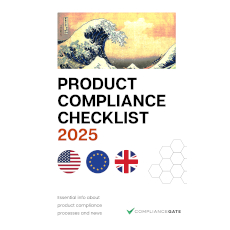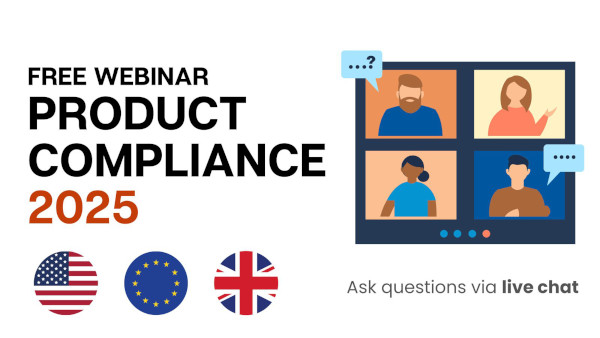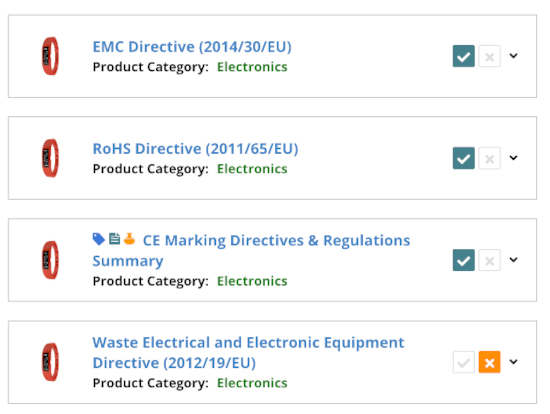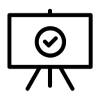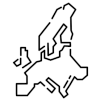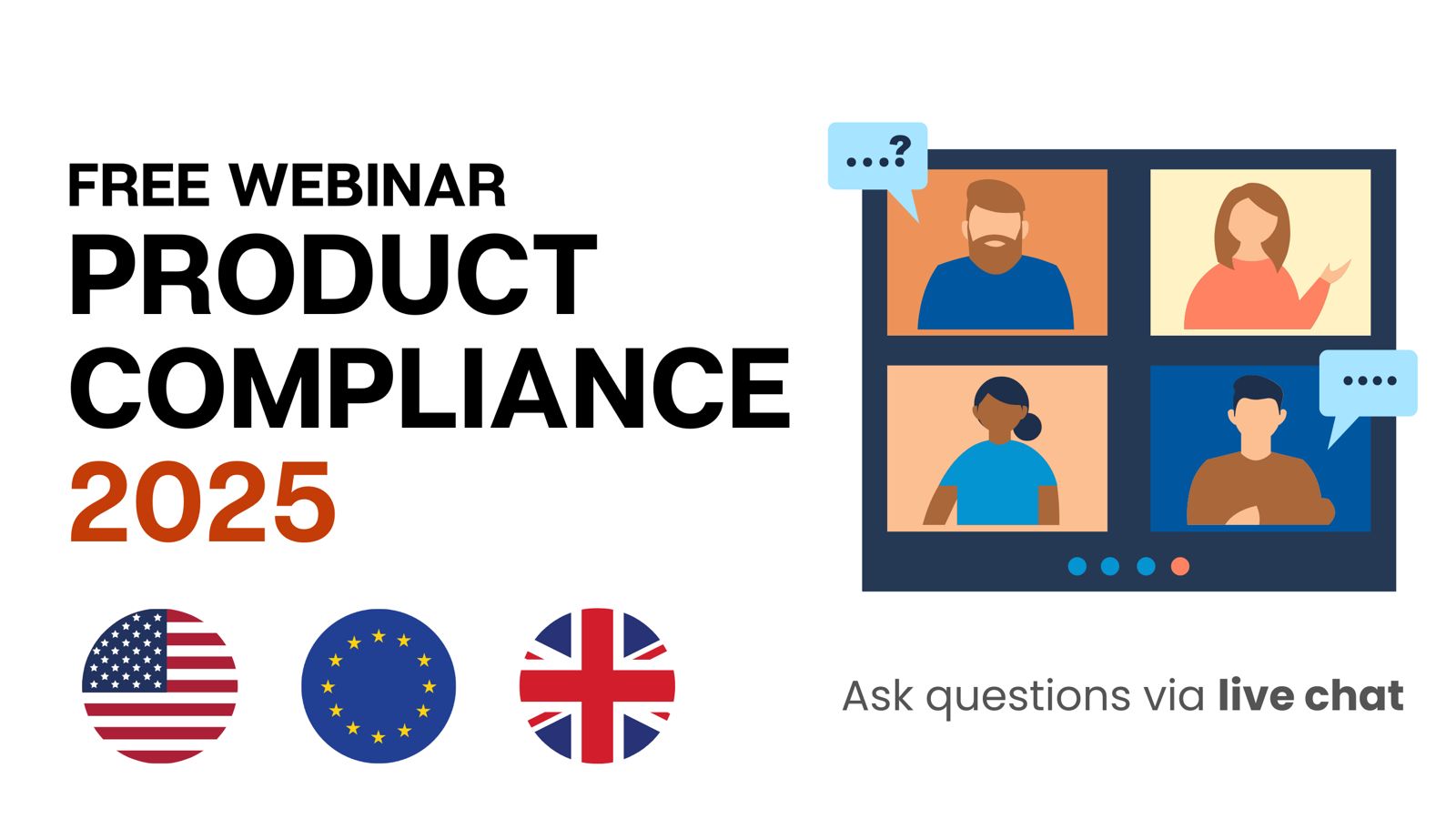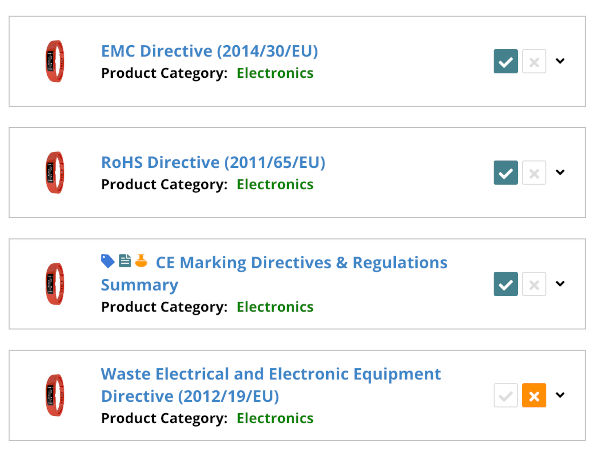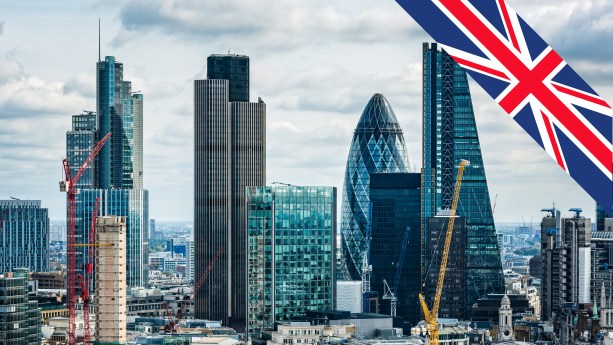
UKCA marking indicates compliance with one or more UK regulations that in turn requires the UKCA mark on the product or its packaging. The marking can be found on many products that were previously CE marked when the UK was part of the EU. As such, the UKCA mark is commonly found on toys, electronics, PPE, medical devices and many other products.
In this guide, we list different UKCA marking regulations and explain what type of products they cover. The information presented in this guide is based on information found on the GOV.UK website. The product examples are taken from the lists of designated standards and, in some cases, from the text of the relevant regulation.
Note: This article does not cover requirements for Northern Ireland, which is generally aligned with EU product safety requirements.
Content Overview

FREE CONSULTATION CALL (US, EU & UK)
- Request a free 30-minute call with Ivan Malloci to learn how we can help you with:
- Find product requirements
- Certification and labeling
- Lab testing
What regulations require UKCA marking?
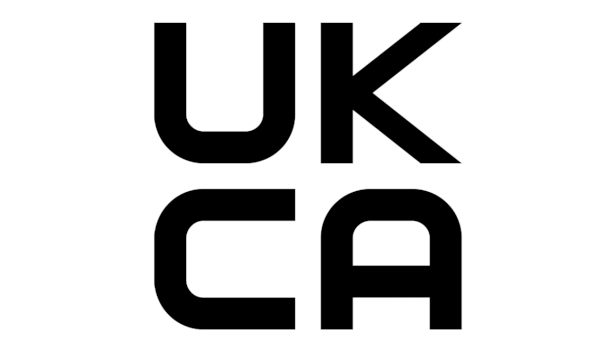
In this section, we provide a list of UKCA marking regulations found on the guidance page concerning “UKCA marking conformity assessment and documentation” published on GOV.UK along with an example of the product category that they cover.
Notice that CE marking is also accepted in most of the listed regulations. Hence, manufacturers can often choose between UKCA and CE marking.
| Regulation | Product category (example) | ||
| Equipment and Protective Systems Intended for Use in Potentially Explosive Atmospheres Regulations 2016 | Equipment and Protective Systems | ||
| Electromagnetic Compatibility Regulations 2016 | Electronics | ||
| Lifts Regulations 2016 | Building lifts | ||
| The Electrical Equipment (Safety) Regulations 2016 | Electronics | ||
| Pressure Equipment (Safety) Regulations 2016 | Pressure equipment | ||
| Pyrotechnic Articles (Safety) Regulations 2015 | Explosive articles | ||
| Recreational Craft Regulations 2017 | Watercraft | ||
| Radio Equipment Regulations 2017 | Radio equipment | ||
| Simple Pressure Vessels (Safety) Regulations 2016 | Pressure vessels | ||
| Toys (Safety) Regulations 2011 | Toys | ||
| Aerosol Dispensers Regulations 2009 | Aerosol Dispensers | ||
| Gas Appliances Regulation (EU) 2016/426 | Gas appliances | ||
| Supply of Machinery (Safety) Regulations 2008 | Machinery | ||
| Noise Emission in the Environment by Equipment for Outdoor Use Regulations 2001 | Outdoor machinery | ||
| Personal Protective Equipment Regulation (EU) 2016/425 | Personal protective equipment | ||
| Measuring Instruments Regulations 2016 | Measuring instruments | ||
| Non-automatic Weighing Instruments Regulations 2016 | Weighing instruments | ||
| Restriction of the Use of Certain Hazardous Substances in Electrical and Electronic Equipment Regulations 2012 | Electronics | ||
| Ecodesign for Energy-Related Products Regulations 2010 | Energy consuming products (e.g. dishwashers) | ||
| Explosives Regulations 2014 | Explosives | ||
The guidance document mentioned above claims to only list regulations that are under the scope of the following departments:
- Department for Business and Trade (DBT)
- Department for Environment, Food and Rural Affairs (DEFRA)
- Department for Energy Security and Net Zero (DESNZ)
- Department for Work and Pensions (DWP)
As such, some regulations that require UKCA marking are not listed in the guidance document. Here are some examples of regulations that are not listed, but for which UKCA marking is required:
- Medical Devices Regulations 2002
- Construction Products Regulation (EU) 305/2011
This could be because they fall under the scope of other departments such as the Medicines and Healthcare Products Regulatory Agency (MHRA) for medical devices and the Ministry of Housing, Communities and Local Government (MHCLG) for construction products.
Note that additional UKCA marking regulations may exist.
Toys
The Toys (Safety) Regulations 2011 set requirements for children’s toys. The regulations also apply to children’s products that have play value, such as bunk beds equipped with slides, for example.
These regulations require that toys supplied to consumers are safe for use. They do this by requiring the product to meet certain safety standards, such as the EN 71 standard series. They also set other requirements such as documentation, and labelling.
Here are some examples of covered products:
- Finger paints
- Trampolines (for domestic use)
- Cosmetic kits
- Electric toys
- Roller skates
Electrical and electronic products
There are several UKCA marking regulations that cover electrical and electronic products. Below we list UKCA marking regulations related to such products and provide some examples of products cover under each regulation.
The Restriction of the Use of Certain Hazardous Substances in Electrical and Electronic Equipment Regulations 2012
These regulations, also known as RoHS, restrict the following heavy metals, phthalates and other substances in electrical and electronic products:
- Mercury < 0.1%
- Cadmium < 0.01%
- Hexavalent chromium < 0.1%
- PBB < 0.1%
- PBDE < 0.1%
- DEHP < 0.1%
- BBP < 0.1%
- DBP < 0.1%
- DIBP < 0.1%
The Electrical Equipment (Safety) Regulations 2016
These regulations contain safety requirements for electrical products designed to be used between 50 to 1000 volts (AC) and 75 to 1500 volts (DC). Non-compliant products risk causing harm to the users like electric shocks.
Here are some examples of covered products:
- AC adapters
- Phone chargers
- Room heaters
- Lasers and laser-related equipment
- Battery chargers
The Electromagnetic Compatibility Regulations 2016
These regulations contain electromagnetic compatibility requirements for electronic products. For instance, the regulations require that electronic products not generate an electromagnetic disturbance that interferes with other devices.
Here are some examples of covered products:
- Household appliances
- Electric tools
- Electrical lighting equipment
The Radio Equipment Regulations 2017
These regulations set requirements for radio equipment. They aim to ensure that the products supplied are safe for use and that they efficiently use the radio spectrum. For example, non-compliant products risk causing interference with other devices which can put the user in dangerous situations.
Here are some examples of covered products:
- Bluetooth devices
- WiFi-enabled devices
- GPS devices
- Wireless headsets
The Ecodesign for Energy-Related Products Regulations 2010
These regulations set requirements for certain energy-related products. Covered products must meet specific performance standards relating to their energy efficiency.
Here are some examples of covered products:
- Air conditioners
- Computers
- Lighting products
- Washing machines
Personal protective equipment
The Personal Protective Equipment Regulation (EU) 2016/425 sets safety requirements for personal protective equipment (PPE). PPE is defined as equipment that should be held or worn by workers, athletes, and consumers in general in order to protect from safety risks.
PPE is classified into three different risk categories, according to the severity of the risk it protects from. Some of the requirements, such as the conformity assessment procedure that should be followed, vary according to the risk category to which the PPE belongs.
Here are some examples of covered products:
- Protective footwear
- Industrial safety helmets
- Protective gloves
- Protective clothing
- Hearing protectors
- Mountaineering equipment
- Protective goggles
Machinery
The Supply of Machinery (Safety) Regulations 2008 contains safety requirements for machinery products, including:
- Interchangeable equipment
- Safety components
- Lifting accessories
- Chains, ropes and webbing
- Removable mechanical transmission devices
- Partly completed machinery
Non-compliant machinery products risk causing harm to the user and potentially other third parties.
Here are some examples of covered products:
- Laser processing machines
- Lasers and laser-related equipment
- Fixed ladders
- Packaging machines
- Food processing machinery
- Agricultural machinery
Measuring instruments
The Measuring Instruments Regulations 2016 contains requirements for certain kinds of measuring instruments. The regulations aim to ensure that such products are accurate in measuring. This regulation is also the reason why you can find the UKCA marking on Stella Artois beer glasses.
Here are some examples of covered products:
- Gas meters
- Electricity metering equipment
- Drinking glass, jug or thimble measure
- Water meters
- Thermal energy meters
- Weighing instruments
Gas appliances
The Gas Appliances Regulation (EU) 2016/426 sets requirements for gas appliances and fittings. Non-compliant products might result in minor to serious harm to the user, third parties, and property as the product involves burning gaseous fuels.
Here are some examples of covered products:
- Ovens
- Fryers
- Mechanical thermostats for gas-burning appliances
- Gas-fired heating boilers
- Domestic cooking appliances
- Mechanical thermostats
Aerosol dispensers
The Aerosol Dispensers Regulations 2009 set requirements for aerosol dispensers supplied in the UK. Non-compliant products could result in serious injuries to the users as some aerosol dispensers may be carrying flammable substances.
Here are some covered products:
- Spray aerosols
- Foam aerosols
- Aerosol dispensers used for cosmetic products
Medical devices
The Medical Devices Regulations 2002 contain safety requirements for medical devices supplied in the UK. Medical devices are split into different classes depending on the product’s characteristics. Some of the requirements vary according to the device’s class. Non-compliant products risk harming the user or the human subject for which the device is used.
Here are some examples of covered products:
- Single-use medical gloves
- Heavy duty stretcher
- Dental implants
- Joint replacement implants
- Spectacle lens
- Medical electrical equipment
- Surgical masks
Construction products
The Construction Products Regulation (EU) 305/2011 contains performance requirements affecting construction products. These are products which are intended to become part of construction works like buildings. Non-compliant products risk causing damage to property and its occupants.
Here are some examples of covered products:
- Fire detection and fire alarm systems
- Concrete roofing tiles
- Controlled door-closing devices
- Windows
- Iron pipes
- Chimneys
- Thermal insulation products
- Roof coverings
Other products
As shown in the table showcased at the beginning of this guide, there are other product categories that require UKCA marking, such as the following:
- Building lifts
- Pressure equipment
- Explosive articles
- Watercraft
- Pressure vessels
- Outdoor machinery
- Weighing instruments
Finally, note that there may exist additional product categories, for which UKCA marking is required.
Note: Contains public sector information licensed under the Open Government Licence v3.0.

